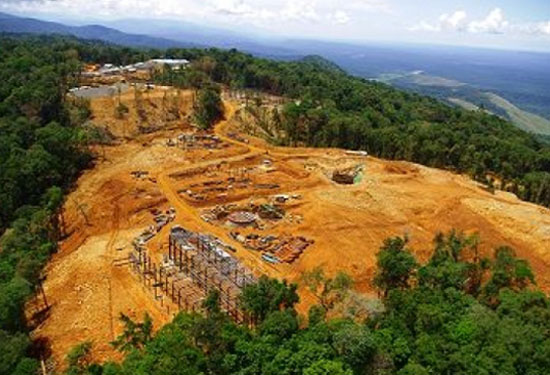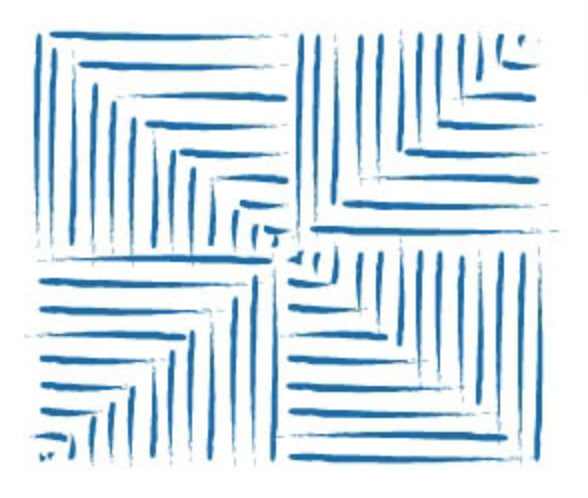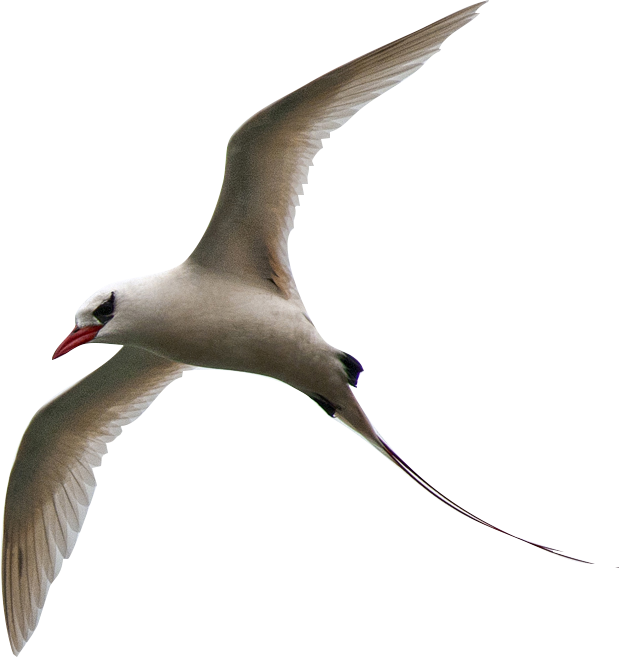
The Ramu NiCo nickel mine in Papua New Guinea has only been functional since March 2012, but since 1999 has been embroiled in controversy over its waste disposal program, which pumps 14,000 tonnes of highly reactive waste into the Bismarck Sea on the coast of the Madang province. Highland Pacific Ltd, the mining company overseeing the project since 1999, has continuously claimed the program is not environmentally damaging, but independent reports have shown potentially catastrophic consequences for the marine ecology. There are dangerous implications of a new environmental disaster similar to the one at Ok Tedi mine, whose damage will continue to be felt by the people of PNG for centuries. An Asia-Pacific Journalism special report by Mohamed Hassan.
ANALYSIS: Papua New Guinea is home to some of the biggest gold, silver and nickel reserves in the world, and for decades has been the centre of attention for international mining giants.
These companies have been accused by critics for years of abusing a corrupt political system in PNG to get cheap contracts, flexible labour laws and grossly deregulated environmental laws.
While the new Peter O’Neill government is showing promising signs of change, much of the mining practices set up by previous governments are still in place, and every year, millions of tonnes of mining waste are dumped into landfills, rivers and seas, without accountability or oversight.
One of the biggest mines accused of threatening a new environmental disaster is the Ramu mine.
The Ramu Nickel-Cobalt mine, 75km west of the provincial capital of Madang, has been the centre of much controversy since the project's inception in 1999 by the Australian, PNG-based, Highlands Pacific Ltd.
The $1.5 billion mine is run and fully funded by Chinese firm Metallurgical Group Corporation (MCC), and has been operational since March 2012, with plans to become fully operational by mid-2013 (Highlands Pacific, 2012).
At the opening of the mine, John Gooding, managing director of Highlands Pacific, called it "very important milestone after the many delays that have been experienced by the project".
Bitter battle
These delays are due to a bitter decade-long battle between the company and landowners in the Madang province, who claim the project will cause catastrophic environmental damage to the Bismarck Sea, where waste from the mine is being disposed.
Alex Harris called it “paradise at risk”, describing the Bismarck Sea as "an expanse of water described by marine biologists as having the highest diversity of corals, fish, crustaceans, molluscs and marine plant species in the world", an ecosystem in grave risk of destruction at the hands of PNG's booming mine industry (Harris, 2012).
The sea also provides a livelihood for 30,000 local fishermen, who fear the damage the project will have on the marine life.
"In its own review of the Ramu Environmental Plan 1999 (EP), the National Fisheries Authority of PNG determined the project to be 'unsustainable socially, economically and environmentally and cannot be allowed to proceed.'"
Thirteen years on, and the Ramu NiCo mine is up and running, after winning a tedious legal battle with local landowners attempting to stop Highlands Pacific from dumping 14,000 tonnes of toxic waste into the Bismarck Sea per day for the next 20 years.
Ok Tedi disaster
The same year the Ramu project was launched, 1999, the Ok Tedi environmental disaster was beginning to unravel, highlighted the chilling consequences of mining deregulation. BHP-Billiton, the world's largest mining company, dumped 80,000 tonnes of mining waste into the Fly and Ok Tedi rivers every day for over 20 years.
The environmental damage that resulted devastated the lives of 50,000 people in 120 villages downstream, poisoning 2000 sq km of forest, destroying the land of thousands of farmers and depleting fishing stocks (The Age, 2007).
A United Nations report released last month says thousands of refugees in West Papua, whose livelihoods were ruined by the disaster, are still left unaccounted for, and have not received compensation for the damages (IRIN, 2012).
The Ok Tedi mine is still in operation today, and contributes roughly 18 percent of PNG's annual GPD (UN, 2012). The effects from the disaster will take 300 years to clean up, according to mining experts (The Age, 2007).
Submarine tailings
According to the project outline published by Highlands Pacific in August 2009, a thorough environmental assessment of the Ramu NiCo project was completed, aiming to "minimise and/or mitigate emissions and discharges". With regards to waste disposal, it outlines briefly the use of the Submarine Tailings Disposal method:
"The marine geomorphology of Basamuk has been confirmed by detailed bathymetric surveys conducted to one metre, identifying the area as suitable for the safe placement of tailings at depth in ocean canyons.
“Well-designed sustainable tailings disposal strategy based on submarine disposal of neutralised tailings into a deep ocean basin. High natural sedimentation rate (80 mtpa) is a feature of the basin." (Highlands Pacific, 2009)
The submarine tailings disposal method is ideal for waste disposal if the location of the mine is close to the coast. It offers an alternative to land-based disposal techniques, and is supposedly a more environmentally-friendly approach to tailings disposal.
In cases where sulphide mining takes place, as with the Ramu Nickle mine, this method disposes the reactive tailings deep below sea level, in areas with low oxygen levels. This avoids oxidised reactions to occur, which result in highly acidic discharges (Ellis et al, 1995).
"The basic submarine tailings disposal (STD) design consists of a tailings line to a deaeration/ mixing chamber, with a seawater intake line, and discharged to location and depth allowing gravity flow of a coherent density current to final sedimentation area. Such STF systems can place mine tailings at locations and depths constraining environmental impact to (1) restricted areas of seabed, and (2) deep water turbidity. At some coastal and island locations, STD provides a tailings disposal option that can have less cumulative environmental impact than the alternatives of disposal to pit, surface (dam impoundment), or river or lake. There needs to be minimal risk of tailing suspension, or resuspension, and upwelling to surface waters."
Because of the nature of the Ramu nickel mine, the excavation process results in acid mine drainage (AMD). This is caused due to the reaction of water and oxygen with the sulphur in rocks due to weathering, generating high levels of sulphuric acid.
Since the mine became fully operational in May 2012, reports show that local residents have complained from the smell caused by excavation (PNG Mine Watch, 2012).
So far no proven technology prevents acid mine drainage (AMD), or eliminates its adverse effects, and sulphide mining has been shown in the past to be dangerous to the environment and have devastating social and economic impacts on the wider community.
Acidic waste
The Environmental Protection Agency has identified AMD as one of the largest issues facing the mining industry (Babcock et al, n.d.). Apart from the irreversible damage caused during excavation to the local environment through drainage, the majority of this acidic waste, combined with the other waste products generated from mining, form what is called tailings.
This generally consists of the following sources:
• Natural rock
• Added process chemicals
• Explosives
• Fuels/oils and greases/antifreeze
• Water treatment, sewage facilities, and laboratories
• Miscellaneous operations.
Due to the high acidity or high basicity of the combination of these materials, most companies prefer to use the submarine tailings disposal method in order to keep the materials from reacting with oxygen.
However, there are many flaws with this method, and especially so when it comes to sub-tropical regions such as PNG. This is due to the chemical extremes of the tailings, as well as the warmer climates, both of which favour the increased solubility of numerous metals and metalloids.
Early estimates suggested up to 14,000 tonnes of tailings are disposed of each day from Ramu mines (IMO, 2008).
‘Fatally flawed’
However, a report by Mining Watch in 2002 highlighted several serious issues surrounding the use of STD at the Ramu nickel mine (Mining Watch Canada, 2002).
1. Thermoclines and upwelling: Bottom currents and internal waves in the region can push STD slurry up to much higher levels, significantly impacting the ecology
2. Metal Solubility: Cooler surface waters in the Bismarck Sea and deeper mixing of the surface waters off the north coast of PNG means the oxygenated layers in which metals more readily leach out will penetrate more deeply than currently modelled by NSR consultants.
3. Seabed slope: The seabed at Ramu mine does not have a steep slope in sections. This means that tailings are likely to pile up in places rather than flow together in a density current to the deeper parts of the ocean.
4. Dispersion of tailings: Many models exist for predicting movement in the marine environment; however, most of these are virtually untested and are indeed based on inappropriate parameterizations
Since 2000, six “independent” studies were commissioned by MCC, all of which found no environmental risks associated with the use of STD at Ramu mine.
It was on this basis that the Somare national government granted MCC a special lease to use STD.
However, in 2001, the Evangelical Lutheran Church of Papua New Guinea commissioned another independent analysis conducted by the Mineral Policy Institute.
This analysis found that the environmental plan outlined by Highlands Pacific Ltd to discharging tailings into the Bismarck Sea was “well-presented but fatally flawed”.
The report criticised the plan for “inadequate data collection, faulty methodology, models that are contradictory, highly optimistic scenario development and problems in the presentation of the evidence in the Environmental Plan” (MPI, 2001). The report concluded that:
“There can be no doubt that disturbance on the scale of a Submarine Tailings Disposal operation will have significant biological impacts. If such a mining operation is to proceed, the potential consequences should be weighed against the environmental degradation which could result from both Submarine Tailings Disposal and other tailings disposal methods. The government of Papua New Guinea did not have this option in regard to the Ramu Nickel Project as the Environmental Plan prepared by Natural Systems Research gave no indication of the likely impacts or risks associated with the proposal and did not thoroughly examine alternatives to marine discharge.”
The report also found that the description provided for the expected behaviour of the tailings was inaccurate and improbable.
The Somare government rejected the report, which had been put on hold until 2006, on three separate occasions. In 2008, 1.2 million Lutherans signed a petition demanding the government considers the environmental risks of the Ramu mine.
The petition also received support from the Fisheries Minister Ben Semri, who said pollution caused by the tailings disposal would cripple the local fishing community. In June 2008, the government agreed to conduct another analysis of the concerned effects, which was to be run by the Scottish Institute of Marine Science, but in March 2010 approved the STD programme before the new report had come out (Act Now PNG, 2010).
Landowners vs government
Ramu Nickel is no unique example of international mining companies pushing strongly for the use of STD in excavations, and to no surprise; it is easy and cheap to set up, and does not create a constant visual reminder of the environmental costs of mining.
However, precisely in contradiction to the rhetoric of safety and stability that is used to argue feverously for its implementation, the use of STD in many developed countries such as the US, Canada and Australia, who are also of the biggest mining countries in the world, is effectively banned under strict environmental regulation.
As a Greenpeace International report points out, this presents the hypocritical nature of environmental regulation (Greenpeace, 2008).
“Most often, such STD operations are conducted offshore of developing countries, by companies headquartered in developed countries. Such disposal methods would generally be politically unacceptable within the exclusive economic zones of those developed nations.”
In fact, these countries often push for deregulation in developing countries in order to allow for these methods to take place.
In May 2010, the Somare government passed an amendment to the Environment Act protecting resource companies from being prosecuted over environmental damage, and allowing the Department of Environment to approve risky environmental investments and “may not be challenged or reviewed in any court or tribunal” (PNG Mine Watch, 2010).
This amendment in effect allowed MCC to go ahead with its implementation of STD without being held accountable for any outcome.
However, this amendment was revoked in January 2012 by the current O’Neill government in response to a campaign by landowners (Rheeney, 2012).
In a parliamentary address on 20 January 2012, Environment Minister Thomson Harokaq’veh said:
“Repealing the Environment Act Amendments is a big first step for myself and the O’Neill-Namah government in restoring the proper rights of landowners to be able to protect their interests.” (Harokaq’veh, 2012)
In June 2011, the National Court overruled an application by landowners attempting to prevent MCC from dumping tailings into the sea at Ramu NiCo’s Refinery at Basamuk, in Rai Coast district of Madang province.
An appeal was taken to the Supreme Court of PNG, but was rejected on December 2011. A statement from MCC said: "After a 21-month legal battle, this comprehensive victory is finally achieved through patience and persistence, along with strong support from the community and the PNG Governments."(Ramu NiCo Ltd, 2011)
Speaking in a radio interview on 21 January 2012, Tiffany Twivey, who represented the landowners in the case, said:
“The national court judge accepted the landowners’ scientific evidence it was going to be an environment disaster this dumping and rejected the scientific evidence from the consultants to the mining company who said they’d be negligible damage and that’s why he held nuisance was proved.
“Now the mining company appealed that and the Supreme Court, the judge in the minority who wanted to stop it said that greed with the scientific evidence that there would be an environmental catastrophe and the other two judges who refused to grant an injunction on a technicality really didn’t touch that finding at all. So the fact of the matter is the National Court judge’s finding that it’s going to be an environmental catastrophe stands.” (ABC, 2012)
A PayDirt report released in September 2012 criticised the role of international mining companies in PNG. In it, Pascoe pointed to the amendments to the Environmental Act in order to allow Highland Pacific Ltd to continue with its STD program as an example of how Australian companies are willing to work with corrupt states for their benefit (Pascoe, 2012).
"The concerns of landowners have tended to be the biggest casualties of the recent new push for investment, as a weak regulatory environment makes the corporate social responsibility requirements set by government more opaque."
On 9 October 2012, Prime Minister Peter O'Neill admitted the Ramu NiCo deal was not done in favour of the people of PNG, and that much needed to be learnt from it (Post-Courier, 2012).
"We have not done a good deal with Ramu Nickel but I’m certain that we will learn from that mistake and for the other projects that are on-stream, I am certain that we will do a better deal... Our country is not going to disappear, but we will not let people come in and just take our resources away."
Conclusion: A lesson to be learnt?
The effects of Ok Tedi are still being felt today in Papua New Guinea and neighbouring West Papua. Thousands have been displaced, their livelihoods devastated due to the actions of mining giants and corrupt government officials, who chose to overlook the certain dangers of irresponsible mining practices, creating the worst environmental mining disaster ever.
Mining regulations in PNG have been improving under the government of Peter O'Neill, but bad practices are still happening, and the on-going controversies surrounding the new Ramu NiCo mine is another environmental time bomb that threatens to destroy the Madang coastline.
Of the most important improvements is changing laws that prevent landowners, who legally own 95 per cent of land in PNG, from pursuing legal action against mining companies operating on their land.
This is also changing, but more important still is the enforcement of government regulations on environmental pollution and mining practices, in order to prevent another environmental disaster from happening in pursuit of short-term economic benefit.
The gross inconsistencies in the environmental assessment of Ramu NiCo need to be highlighted and taken seriously by regulators, but by no means are these concerns limited to the Ramu mine.
In a country overrun by international mining giants, it is only a matter of time before bad decisions surface. This is the task Peter O’Neill and his government face today.
References
ABC Radio. (2012). What the latest Enviro law changes mean for the Ramu mine. Retrieved on October 24, 2012, from http://ramumine.wordpress.com/2012/01/21/what-the-latest-enviro-law-changes-mean-for-the-ramu-mine/
Act Now PNG. (2010). A brief history of the Ramu nickel mine. Retrieved on October 23, 2012, from http://actnowpng.org/sites/default/files/A%20brief%20history%20of%20the%20Ramu%20nickel%20mine.pdf
Babcock, E. & Paulu, C. (n.d.). Sulfide mining overview. Retrieved on October 21, 2012, from www.sosbluewaters.org/sulfide_mining_overview.pdf
Ellisa, D.V. , Polingb, G.W. & Baerc, R.L.. (1995). Submarine tailings disposal (STD) for mines: An introduction. Marine Georesources & Geotechnology, 13(1-2), 3-18.
Greenpeace International. (2008). Riverine and sub-sea disposal of tailings and associated wastes from mining operations. Retrieved on October 20, 2012, from www.sjofartsverket.se/pages/15453/31-INF14.pdf
Harokaq’veh, T. (2012). Minister: Env Act amendments one of the worst abuses of executive power. Retrieved on October 24, 2012, from http://ramumine.wordpress.com/2012/01/20/minister-env-act-amendments-one-of-the-worst-abuses-of-executive-power/
Harris, A. (2012). Paradise at risk: The politics of submarine tailings. Retrieved on October 23, 2012, from http://asopa.typepad.com/asopa_people/2012/02/paradise-at-risk-the-politics-of-submarine-tailings.html
Highlands Pacific Ltd. (2012). Ramu nickel cobalt project: Load commissioning commenced. Retrieved on October 22, 2012, from www.infomine.com/index/pr/PB168603.PDF
IRIN. (2012). Papua New Guinea: No relief for flood-affected refugees. Retrieved on October 20, 2012, from www.irinnews.org/Report/96567/PAPUA-NEW-GUINEA-No-relief-for-flood-affected-refugees
Mineral Policy Institute (MPI). (2001). A review of risks presented by the Ramu nickel project to the ecology of Astrolabe Bay, PNG. Retrieved on October 21, 2012, from http://actnowpng.org/sites/default/file/A%20review%20of%20the%20risks%20of%20Ramu%20mine.pdf
MiningWatch Canada. (2002). Submarine tailings disposal. Retrieved on October 10, 2012, from http://eyeonmining.files.wordpress.com/2009/08/01-std-intro.pdf
Pascoe, A. (2012). The Pacific paradox. Australia's PayDirt. September 2012 (1), 158-161.
PNG Mine Watch. (2010). Environment Act changes have destabilised PNG. Retrieved on October 22, 2012, from https://ramumine.wordpress.com/2010/10/31/environment-act-changes-have-destabilised-png/
PNG Mine Watch. (2012). Villagers suffer stench from sulphuric acid production for Ramu mine. Retrieved on October 21, 2012, from http://ramumine.wordpress.com/2012/08/20/villagers-suffer-stench-from-sulphuric-acid-production-for-ramu-mine/
Ramu NiCo Management Limited. (2011). Ramu NiCo finally wins DSTP court battle. Retrieved on October 15, 2012, from www.ramunico.com/plus/view.php?aid=1960
Rheeney, A. (2012). Parliament revokes Environment Act amendments. Retrieved on October 22, 2012, from http://pngexposed.wordpress.com/tag/environment-act/
The Age. (2007). Villagers sue BHP Billiton for $5bn. Retrieved on October 24, 2012, from www.theage.com.au/news/business/villagers-sue-bhp-billiton-for-5bn/2007/01/19/1169095978975.html
Mohamed Hassan is a Postgraduate Diploma in Communication Studies student journalist on the Asia-Pacific Journalism course at AUT University.


